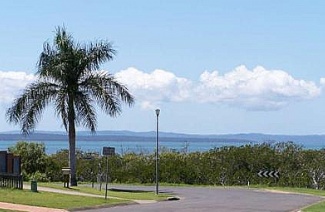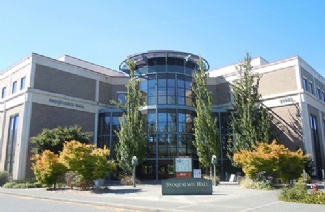Title: New evidence of River Hypothesis
Listen to part of a lecture in a geology class.
Professor: About 30 years ago, a geologist named Edward Cotter, that’s C-O-T-T-E-R, published a paper that contained a very interesting hypothesis.
He was studying ancient rivers in the North American mountain chain. And he noticed that about 450 million years ago, rivers started to behave differently. Before then, rivers were wide, shallow and straight. But after that time, they became deeper and had move curves. They became increasingly meandering, and that’s actually how rivers behaved till these days.
So why might this change have happened?[a1]
Student: Maybe there was some kind of a climate shift?
Professor: Well, lots of climate shifts have happened since then.
Student: Was the change worldwide? Or just in that geographical area?
Professor: Well Cotter speculated that rivers changed worldwide, but he couldn’t prove it. Because he only had evidence from the one North American mountain chain. But his studies gave him an idea about why rivers started to change. He hypothesized it had to do with the spread of plant life on earth.[a2]
Student: So there was no plant life before 450 million years ago?
Professor: Very little according to fossil records. Anyway, geologists were intrigued by this hypothesis which claims that as plants evolved and spread, they had an effect on terrain and rivers. In the past 30 years, more studies have been done. And now we have a lot of data about river systems from around 450 million years ago from all over the world.
In a recent study, a couple of researchers gathered together the existing data and combine them with their own new field data to get a comprehensive picture of the situation.
Their study was specifically designed to identify changes in the shapes of rivers during the time period when vegetation was evolving.
And when the researchers compared the data about river shapes with data they have collected about plant life from the same period, the data seemed to prove Cotter’s hypothesis.[a3]
Student: OK, but how did plant life affect rivers?
Professor: Well, in order to answer that question, we need to look at the geological evidence.
You see, as rivers flow, they leave layers of sediment behind that eventually fossilized. The content, thickness and shape of these fossilized layers and rocks gave us information about how rivers flowed. The earliest records from 500 million years ago show that the sediment in river deposits was largely composed of quartz grain of sand and gravel. That tells us that rivers weren’t defined, they were very shallow and wide, almost like floods.[a4]
But around the time of the rise of plant life, the content of these sediment layers began to change. The quartz grains became much finer. And we see evidence of mud. This suggests that plants promoted the preservation of mud when they sent their roots into the ground. The roots helped to reinforce the ground, which in turn allowed for the creation of river banks.
And we also see evidence of a process called lateral accretion.
Lateral accretion happens when water flows around the curve or bend in the riverbed. Now the speed of the flow on the outside of the bend is fastest, and slowest on the inside of the bend. This sets up what’s called the secondary flow across the river bottom. The fast flowing water on the outside of the bend digs out material from the riverbank and pushes these material laterally across the bottom, and it gets deposited on the other side of the river, on the inner side of the bend.
So, when we see in the sediment layers, evidence of lateral accretion, the erosion on one side and deposit on the other, that’s an indicator that meandering rivers existed.[a5]
And according to the study, strong evidence of lateral accretion appears in the geological record. At the same time, there is also evidence of plants with underground root systems. This suggests that plants promoted the development of modern rivers by creating stable banks, which resulted in the flow of water in single meandering channels.
Student: So it looks like the researchers were able to prove that hypothesis.
Professor: Well, there is no denying that the study presents a very strong case. But some questions about this hypothesis remain. For example, it’s well-known that on other planets, like Mars, there is clear evidence of meandering rivers. But it’s there any evidence of vegetation on Mars?[a6] I think not.
[a1]Q12 出题点
[a2]Q13 出题点
[a3]Q14 出题点
[a4]Q15 出题点
[a5]Q16 出题点
[a6]Q17 出题点
TPO54
12、What does the professor mainly discuss?
A. A hypothesis that rivers formed before the rise of plant life
B. A study of the effects that rivers have on soil formation
C. A debate surrounding two opposing hypotheses
D. New evidence in support of a previously proposed hypothesis
以上就是关于“托福TPO听力下载原文文本”的内容,希望通过上述内容的学习,能够辅助大家更好的备考接下来的考试,预祝同学们在考试中取得高分成绩,早日实现留学梦想!更多精彩内容,敬请关注本频道的持续更新!

















